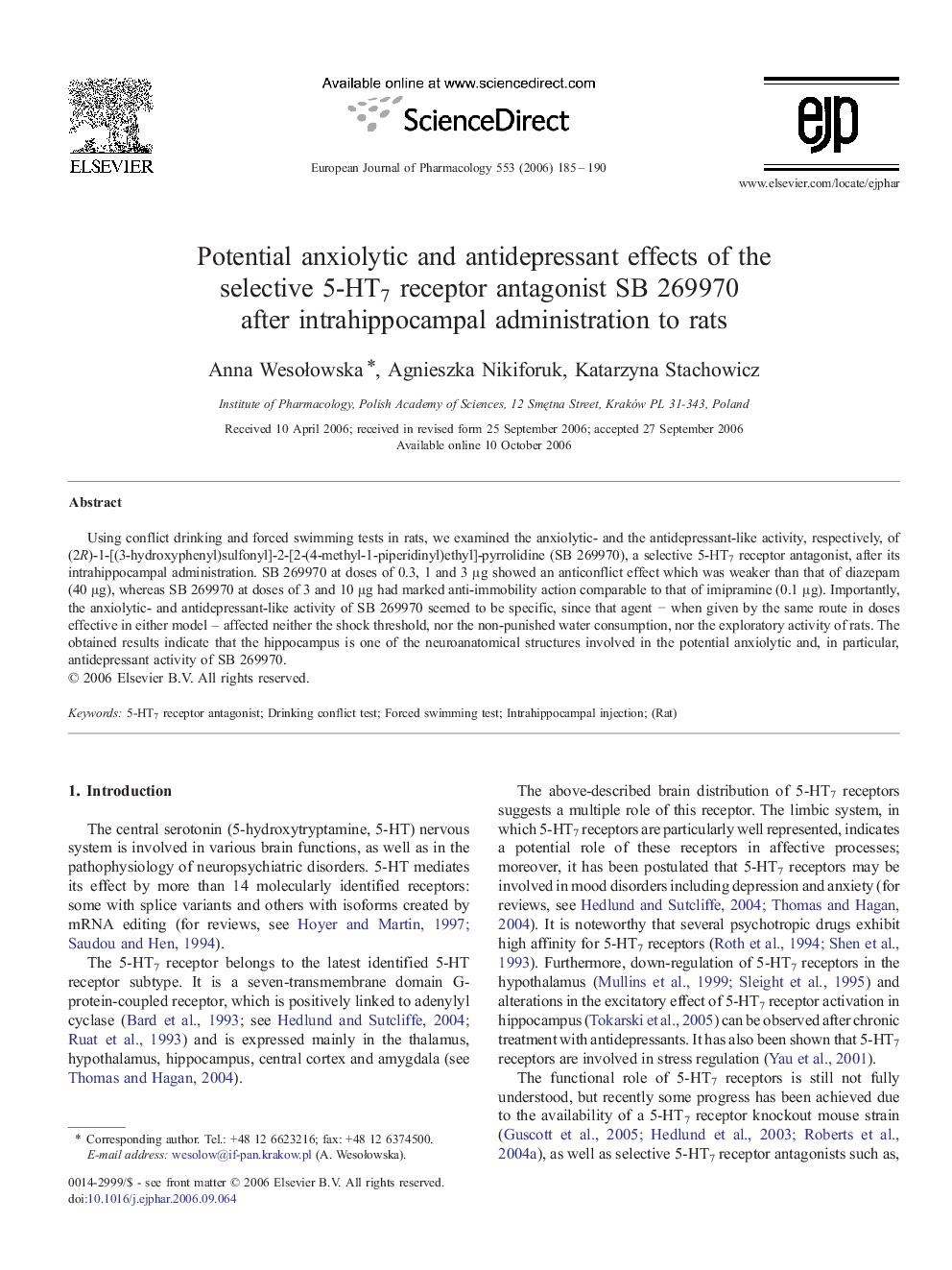| Article ID | Journal | Published Year | Pages | File Type |
|---|---|---|---|---|
| 2536567 | European Journal of Pharmacology | 2006 | 6 Pages |
Using conflict drinking and forced swimming tests in rats, we examined the anxiolytic- and the antidepressant-like activity, respectively, of (2R)-1-[(3-hydroxyphenyl)sulfonyl]-2-[2-(4-methyl-1-piperidinyl)ethyl]-pyrrolidine (SB 269970), a selective 5-HT7 receptor antagonist, after its intrahippocampal administration. SB 269970 at doses of 0.3, 1 and 3 μg showed an anticonflict effect which was weaker than that of diazepam (40 μg), whereas SB 269970 at doses of 3 and 10 μg had marked anti-immobility action comparable to that of imipramine (0.1 μg). Importantly, the anxiolytic- and antidepressant-like activity of SB 269970 seemed to be specific, since that agent − when given by the same route in doses effective in either model – affected neither the shock threshold, nor the non-punished water consumption, nor the exploratory activity of rats. The obtained results indicate that the hippocampus is one of the neuroanatomical structures involved in the potential anxiolytic and, in particular, antidepressant activity of SB 269970.
